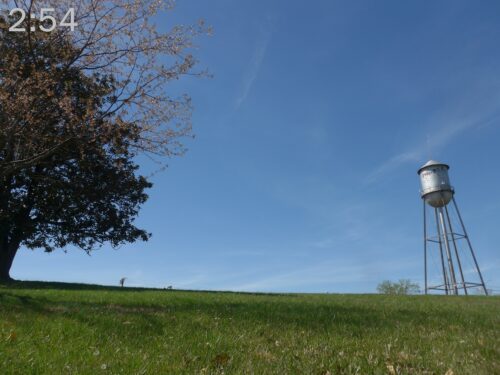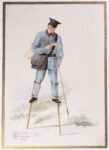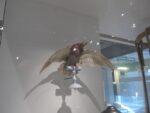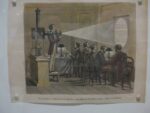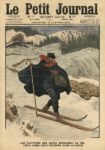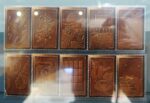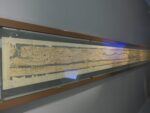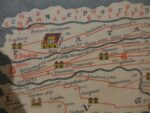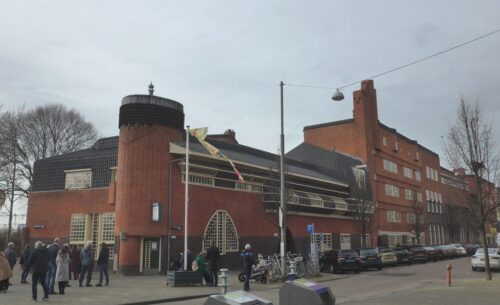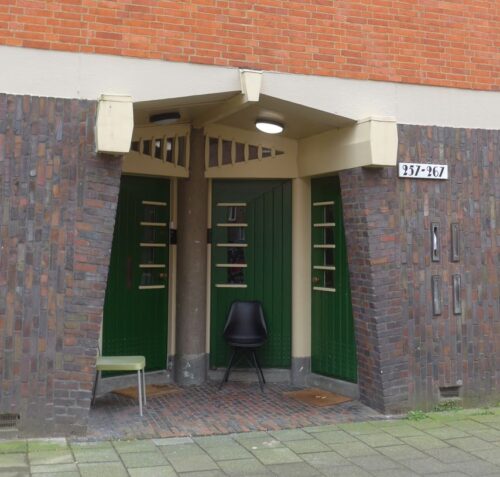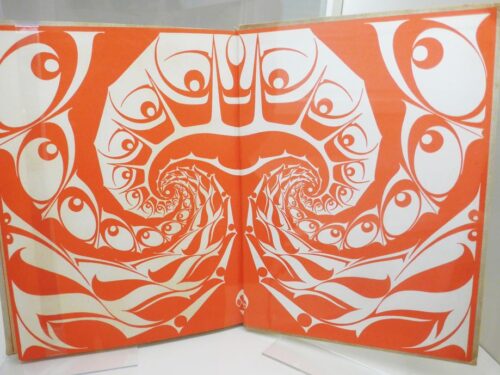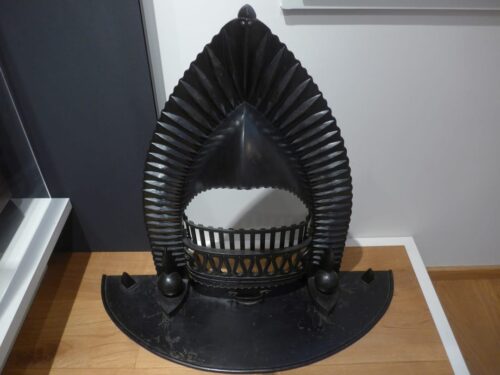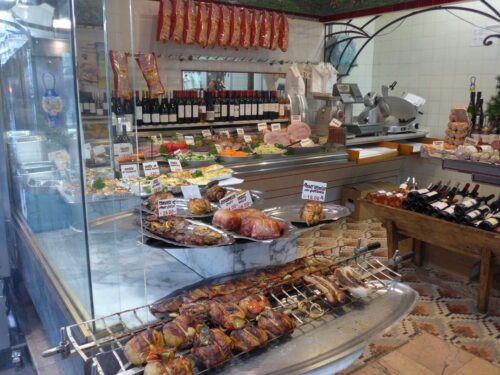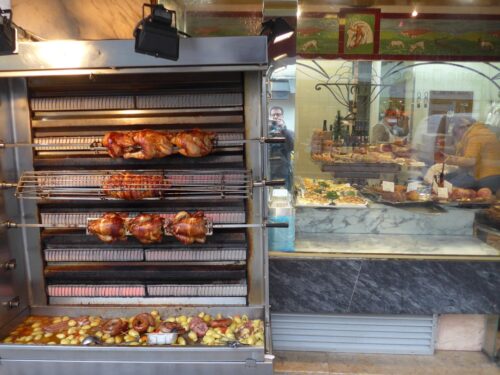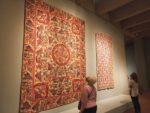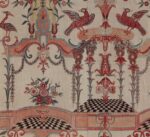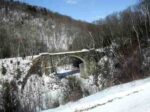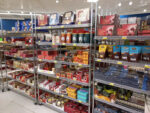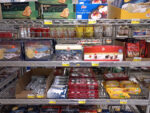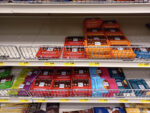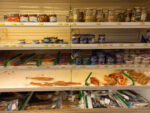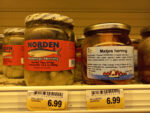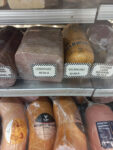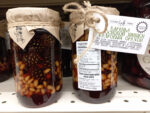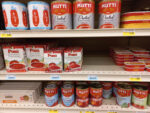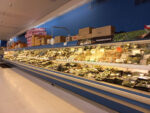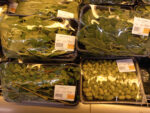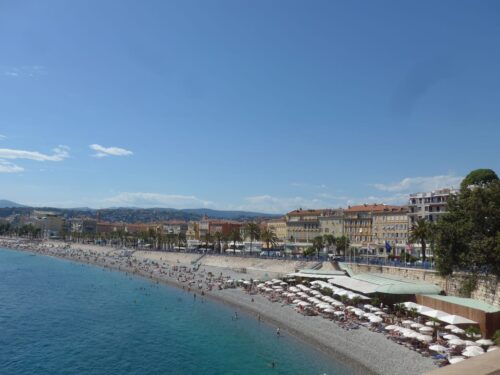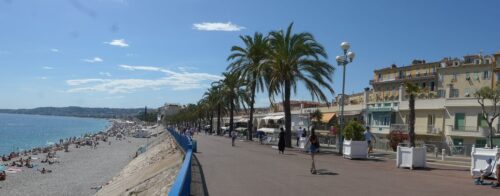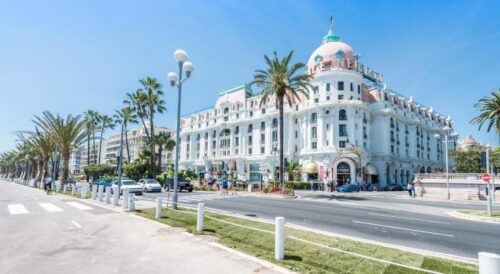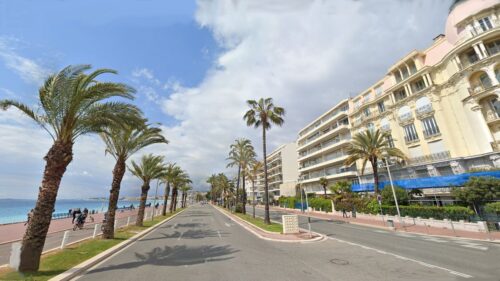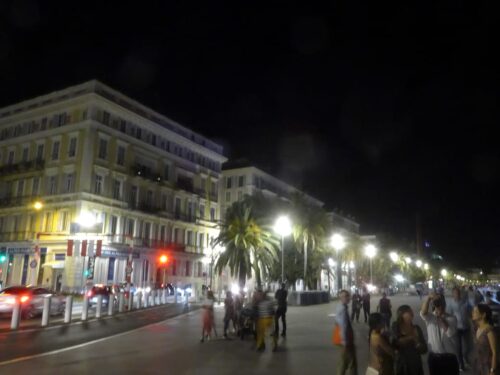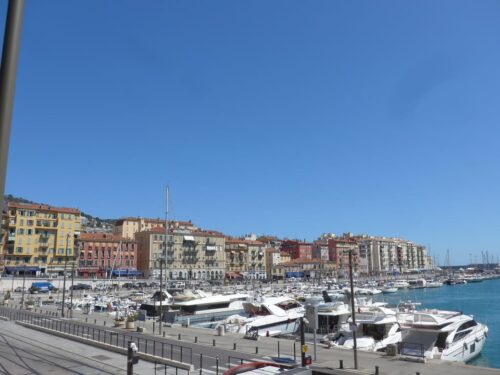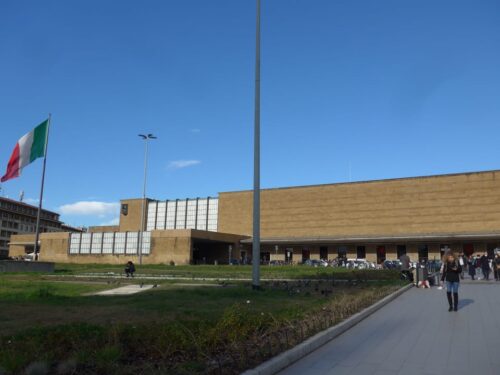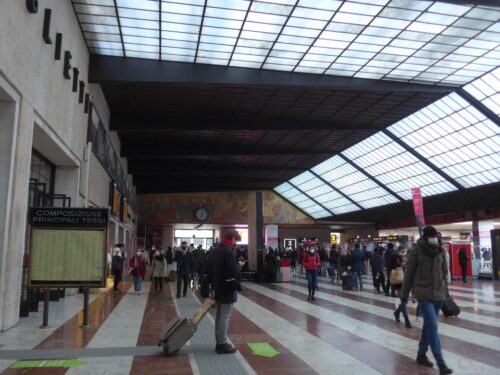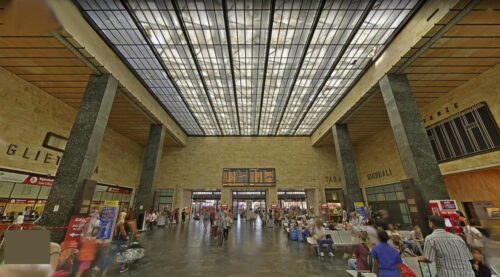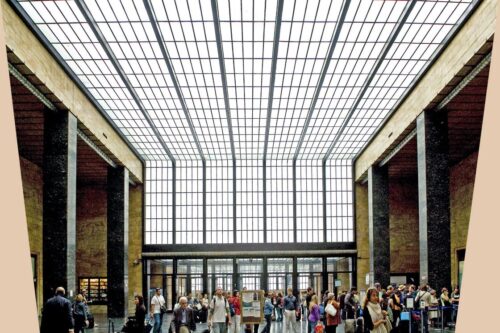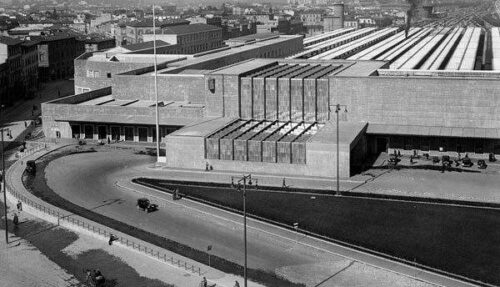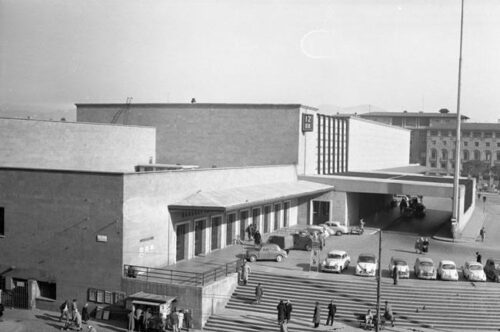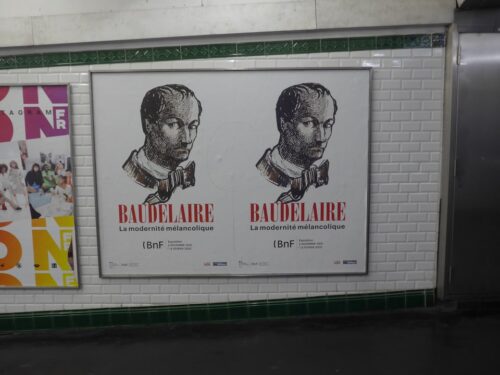Photos of the uncanny light and color in the landscape during the solar eclipse which are almost as exciting as the eclipse itself. I can’t find other photos like these anywhere online! (sun photos are at the bottom). Colors become dull, washed-out, greyish or reddish. At times everything looks flat and two-dimensional. Sometimes it looks like an old faded photograph or that thing on flat screen TVs nowadays where they make everything you watch look like a cheap badly-lit 80s daytime soap opera (it’s called “Motion Smoothing” but most people call it “soap-opera effect” and everyone hates it; most TVs have a hard-to-find setting that lets you switch it off ). It would take a very expensive camera and lots of experience to really capture the colors it but you can get the idea here.
Does the world really need more pictures of Paris?
Yes of course when it’s things you don’t see every day such as the French counterpart of Target, chocolate-scented postage stamps and mail being delivered on stilts! As usual I’m posting pictures of things I’m pretty sure you’re not going see to anywhere else, with one or two exceptions.
I know, the Postal Museum sounds less interesting than watching paint dry –
but trust me it’s riveting and absolutely worth a visit.
Continue reading “Does the world really need more pictures of Paris?”
Imagine Bauhaus meets Frank Lloyd Wright and Dr. Suess, but with Indonesian – The eccentric genius of the Amsterdam School, 1910-1930
Recently in Amsterdam I trekked out to a semi-remote nondescript residential quarter to visit the world’s first modernist apartment building, built in 1917, which is also one of the most important examples of a gloriously eccentric, little-known and absolutely unique style called the Amsterdam School. Lasting from the late-1910s up to World War II, it combined the austere, spartan functionalism of 1920’s modernisn with Art Deco’s geometric extravagance; Frank Lloyd Wright’s dramatic intersecting planes; and – curve ball! – traditional Indonesian styles; and – another curve ball! – a quirkiness that looks like it could have come from Dr. Suess.
Click on images to enlarge and click again on the edges to jump to next or previous image.
Four words and one tip that still aren’t in the guidebooks on France
Here are a couple of items that should shed some light on things that actual French people like and don’t like, or do and don’t do, and despite the endless flow of “insider’s” guidebooks, I’ve never seen them explained in English. (Did you know that you can’t order pastries in restaurants in France, for all intents and purposes?) This post was inspired by a friend who asked for some travel tips for a part of France that I hadn’t been to. It occured to me though that these tips should save every traveler time and headaches and I think they’re fascinating even if you’re not making a trip.
traiteur – a sort of deli that sells prepared foods to go and maybe sliced cheeses and meats (but not sandwiches! , which are sold at boulangeries, bakeries)….
Continue reading “Four words and one tip that still aren’t in the guidebooks on France”
The extraordinary story of India’s 1,500 year mastery of the global trade in printed fabrics
For two millienia, India was the only country that had figured out how to dye or print in color in cotton, because it was extremely difficult before the modern era, involving complicated methods and obscure plant extracts. Pliny marveled over it in 70 A.D. and England didn’t learn the methods until the mid-1700s . So India was more or less the sole supplier of printed cottons, or chintz – a Hindi word – not just to Europe but also to places such as Japan, southeast Asia, and the middle East, in patterns following the local traditions. An exhibition at the St. Louis Art Museum entitled Global Threads: The Art and Fashion of Indian Chintz tells the story.
Click to enlarge
Continue reading “The extraordinary story of India’s 1,500 year mastery of the global trade in printed fabrics”
These stone bridges for the world’s longest and highest railroad in 1840 are still used by trains. They were designed by Whistler’s father (yes that Whistler) and run through the largest roadless tract in western Massachusetts
There’s about four arches deep in the woods an hour or so from Springfield and you can’t seem them from any road; you have walk on a trail which is a popular local sight. There’s also a few assorted disused bridges, a quarry and a tower remaining from some sort of artists colony or commune from the 1960s or 70s. Amtrak and freight trains still use the bridges and I saw an Amtrak train go by just a few feet from the trail.
The bridges were built in in 1840 as “dry” masonry, that is, stones just piled up without cement or mortar. The rail line was the world’s longest, highest and steepest, and the world’s first to go up a mountain. The lead engineer for the construction was Whistler’s father, that is, the husband of Whistler’s Mother, as in the famous painting by James MacNeill Whistler.
Arrow-key or click to scroll through photos
Global Market!
Colossal world supermarket – Poland, Germany, Czechia, Italy Russia, Turkey, UK, India, Korea, Japan, China, Arabic countries
This is just a part of the German department with as much Christmas stuff as in a German supermarket: spice cookies, stollen, marzipan, chocolates with liqueur, Ritter brand chocolate bars including limited-edition Christmas flavor (Lebkuchen, Zimtsterne, Stollen, Marzipan, Pralinen mit Weinbrände und Liköre, Ritter Sport Weihnachtssorte). Even a special tongs for melting rum-soaked sugar into a mulled Christmas wine punch (Zuckerzange für Feuerzangenbowle). Nonchristmas German food includes Leberkäse (similar to bologna), Rollmops, Matjes (both are herring), Spätzle (noodles).
The brands of Italian tomatoes you see in every German supermarket and various Russian specialities
This is the exotic produce aisle where more or less nothing you see can be found in an ordinary supermarket, such as the sweet potato leaf, drumstick leaves, amaranth leaves, fresh chick peas and jackfruit in the last two photos.
Nice and the Côte d’Azur
Nice and the Côte d’Azur are the Miami, and Florida, of France, and much of the rest of Europe and especially the UK and Russia. The fifth largest city in France, Nice is a huge vacation draw in itself and its airport is the arrival point for those traveling to fabled Côte d’Azur destinations such as Monaco, Cannes, St. Tropez and Antibes. Nice looks like Paris painted in pastel sherbet tones, due to the Italian influence that comes from being just a half-hour by car or train from the Italian border, and in fact the region was a part of Italy until 1860 when they voted to join France.
Index (click on photos to enlarge)
Nice
St-Paul-de-Vence
Monaco
Towns on the Côte d’Azur
The Marc Chagall Museum
Quirky special favorites – Les insolites coups de cœur
Nice waterfront
The wide, glorious Promenade des Anglais (“English Promenade”, 2-6), was first built by the English in the 1820s, when Nice was already a popular vacation destination for the English – less so for the French, who weren’t especially interested in seaside leisure – but there was no paved road or sidewalk along the water, so strolling was a messy affair. Queen Victoria was fond of the Côte d’Azur and her eight visits triggered a flood of British vacationers and homebuyers which hasn’t diminished since. Nice’s port (8) is not where the cream of the global tax-evading elite park their yachts – they prefer Cannes.
Florence
The most surprising and unexpected thing I saw on my trip to Florence wasn’t the Michelangelos, Botticellis and Da Vincis (photos at the end) but the train station, built in 1934 in a streamlined modern style with similarities to Frank Lloyd Wright and a bit of Flash Gordon futurism. It’s breathtaking, not least because it’s almost entirely intact and free of disfiguring renovations. There’s an uncanny feel of traveling backwards in time.
I’m pretty sure there are no major intact buildings in this style remaining in the US – if there ever were any to begin with, regardless of size -, nor in Germany. There could be a few in the Netherlands or Russia or eastern Europe. It’s too early-space-age to be glamorous Art Deco (such as Rockefeller Center, or hotels in Miami) or minimalist Bauhaus (which is much more austere and spartan; nothing here is painted white). But I believe Italy has quite a few, as they were among the earliest and most active adopters of modern architecture, a fact which has never really gotten much recognition. I wonder if it’s because the most prominent German Bauhaus architects fled to the US in the 1930s to escape the Nazis, who despised them and their modern architecture, and had long, flourishing, and widely influential careers in America; whereas in Italy the futurists stayed put. This could be why they made few significant inroads into the mainstream of the Euro-American architecture world in the postwar era.
The original signage and many bronze fixtures are still there, which is extraordinarily uncommon even in the best-preserved buildings. Everything is marble, travertine, bronze and wood. Dramatic glass roofs seem to have no support.
Paris: obscure corners of the Louvre, pâté in the convenience store, Saul “New Yorker cover” Steinberg exhibition
Coup de cœur means “a delightful special thing you’ll fall in love with” or “personal favorite” as I’ve mentioned elsewhere and I’m using the term half-ironically because the French use it so much. They’re crazy about it. You can’t go five minutes in France without seeing it, at least in print; I think not really in everyday speech. But these really are some of my coups de cœur.
Subway poster for exhibition “Baudelaire: Melancholic Modernity”
